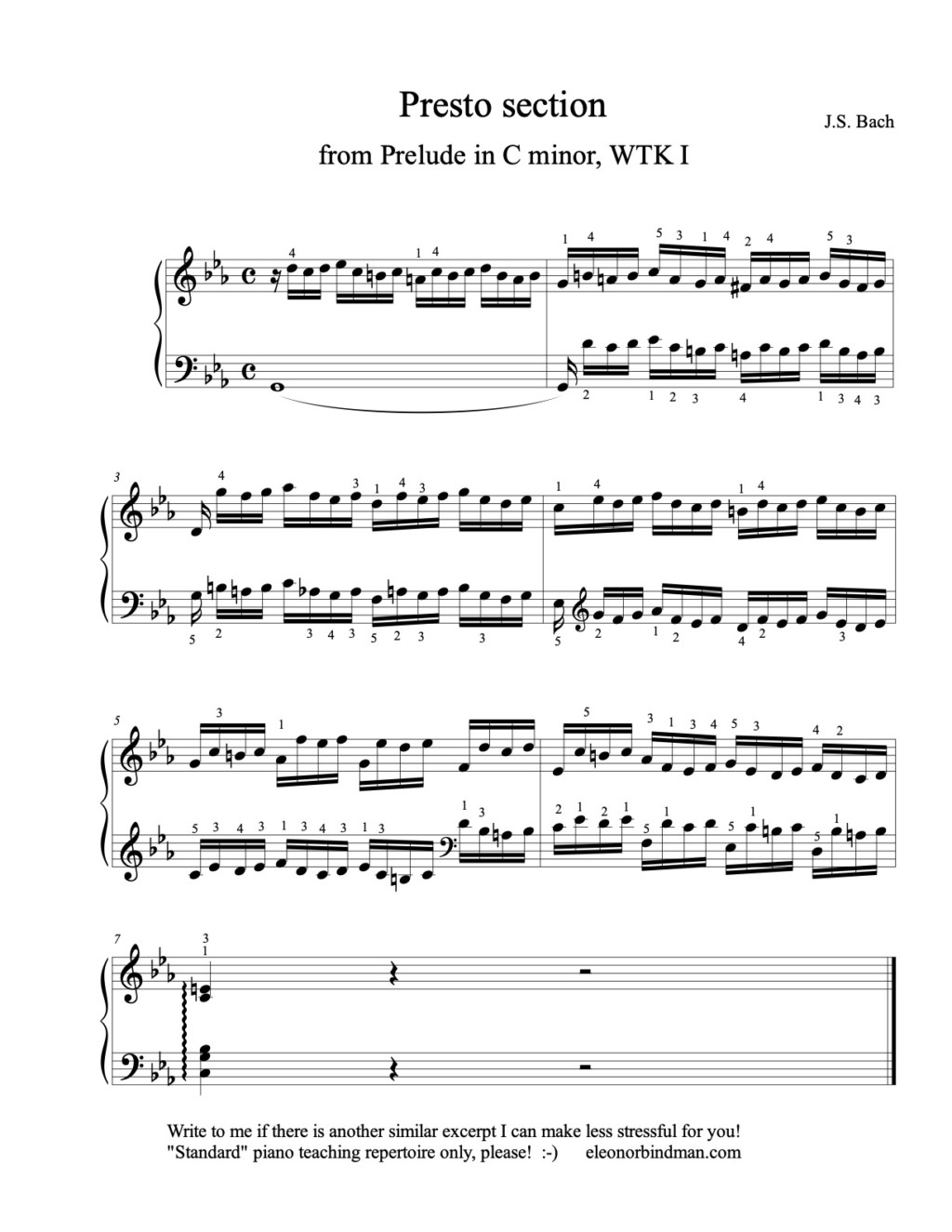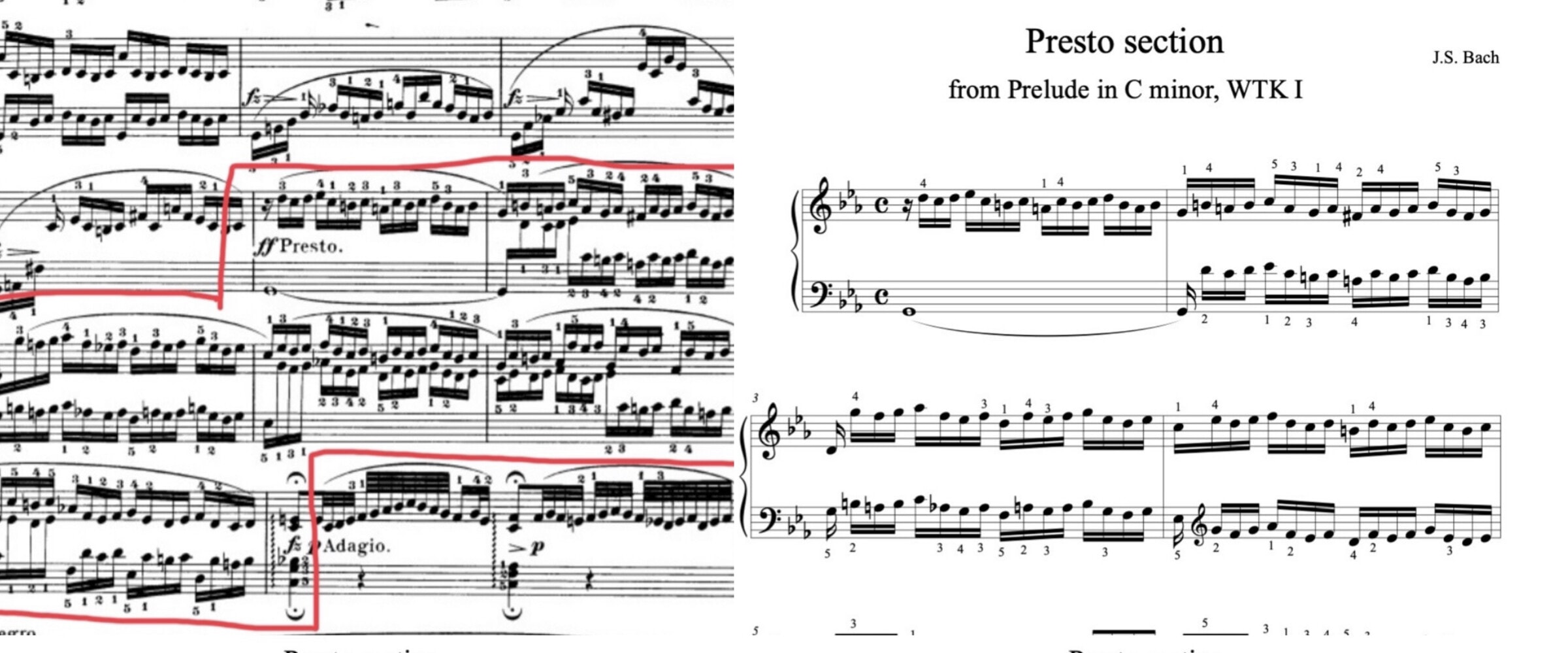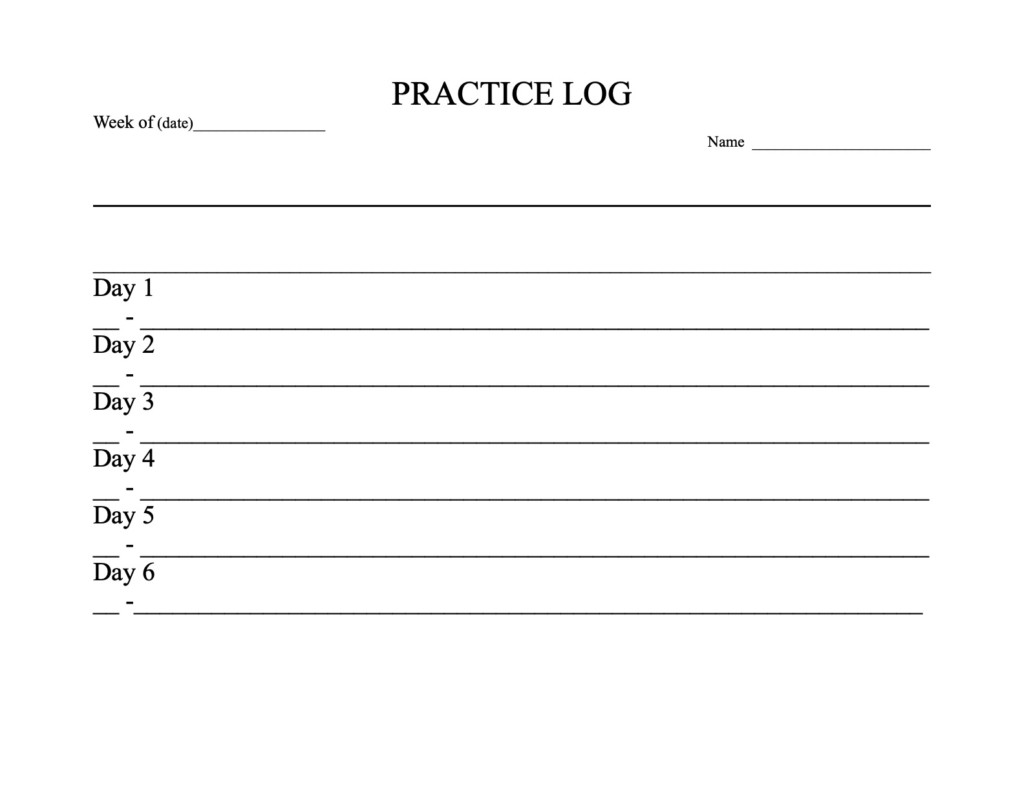When we learn a new piano piece, there is often a particular stretch which gives us the most trouble. It’s usually toward the end, one measure or several, and may actually represent the emotional climax of the piece as intended by the composer. There are infinite examples but some glaring ones are mm. 16-18 of Chopin’s Prelude in E Minor, mm 28-33 (the “Presto” section) of Bach’s Prelude in C Minor, BWV 847 and mm. 37-50 of the Adagio from Beethoven’s Sonata Op. 13 (Pathetique). Many amateur pianists learn to live with the fact that these sections may never sound “perfect” and struggle through them every time they play the otherwise manageable piece.
I believe that two things can be of great help in mastering those difficult parts: a shift in perspective and more efficient practicing. The first step is to realize that we habitually perceive the challenging stretch as problematic. That in itself is understandable, but not helpful. This attitude sets us up for resignation, if not failure. Yes, in comparison with the “easy” parts of the piece, the troublesome spot is different. But if considered separately from the rest of the piece mentally AND visually, it will look and feel more manageable. The visual part is critical: our brain will immediately evaluate it as less daunting JUST BECAUSE IT WILL LOOK VERY SHORT. If it’s laid out in spacious print, it will have a more calming effect than seeing dense clusters of notes. See the 2 examples below, of the Presto from the C-minor Prelude, BWV 847. I used Finale software to create a sheet with just the Presto, numbering the measures 1-7, but one can also make a PDF, or photocopy and cut and paste measures on a separate piece of paper. Looking at ONLY the part which needs special attention will make it less daunting.


Now we need to address the second, more involved part, which is: “efficient” practicing. While this subject merits more than a paragraph, for our purposes we will boil it down to the essentials: divide, plan, repeat and keep a log. This means that you may have to subdivide the chosen excerpt into smaller chunks, practice each part with each hand separately first, plan on a number of daily repetitions and keep a log of your progress. The log will bring structure and substance to your practice sessions and will make practicing a breeze. I include a blank “Log A” template created for my students and a filled out “Log B” below. Feel free to download the blank one or you can come up with another format which works for you. The important thing is to START YOUR DAILY PRACTICE SESSION with this challenging part and to repeat the basic steps for a few consecutive days. You will pretty much be starting from scratch to really learn (or re-learn) this part. We are dealing with haptic memory here, and each exact repetition cements the finger motions we need to play correctly. Added bonus: you may memorize this excerpt before you know it. ☺
As you can see in log B, I would recommend the following to practice measures 28/34 of the Bach Presto:
- Divide the 6 measures into 3 sections and re-number them 1-6.
- Practice each section with hands separately (RH: 1-2, 3-4, 5-6 + downbeat of 7, then LH 2-3, 4-5, 6 to downbeat of 7). Since this is a canon, m. 1 in the LH holds one note and doesn’t need repetition. I include the downbeat of 7 because it’s the resolution of the entire Presto and needs to be connected with the previous measures. Decide on how many times to do each bit (pick a number, depending on your assessment of need: 5, 8, 10?) and go through the cycle.
- Play the entire stretch, each hand separately, a designated number of times.
- Play hands together, in 2-measure increments again, choosing the number of repetitions.
- Play the whole Presto, hands together. The entire process may take anywhere from 5-10 minutes, one step at a time, to 20-25 minutes if covering the entire planned sequence. It helps to log the time you start and the time you finish to have an idea of your time investment. You may find that efficient practicing needs less time than you thought.
Last but not least, there are some basic rules which may seem obvious to some of you but perhaps need to be reminded to others:
- Always practice SLOWLY when working like this, perhaps even using the metronome.
- Make sure that your fingerings are consistent every time. As you put your hands together, you may need to slow down even more and be triply vigilant not to let any stray fingerings undo your careful repetition work. You will notice that I give my preferred fingerings in the separated version of the excerpt.
- This type of work MUST be done on consecutive days. Practicing 10 minutes every day facilitates learning, as opposed to an hour once a week. Your fingers will forget what they learned if you let time lapse in between. We are dealing with haptic memory here, and each exact repetition cements the motions we need to play correctly. Added bonus: you may memorize this excerpt before you know it.
I hope this will be of help to you and those difficult passages will no longer deter you from playing a piece as well as you can. If there is any particular section of a well-known (standard piano repertoire) piece you’re learning that you’d like to see separated, like I did to the Presto here, contact me and perhaps I will have some time to render it in Finale as well. It would be nice to have a small library of these excerpts to help us all conquer those harder parts.


